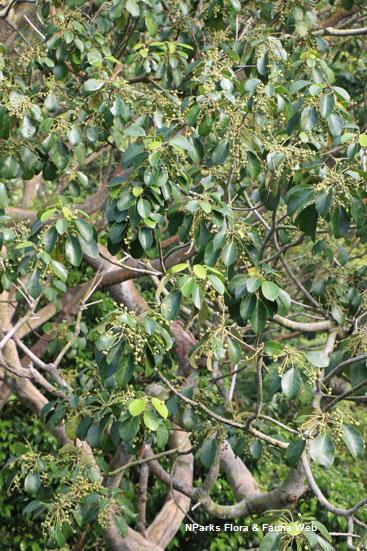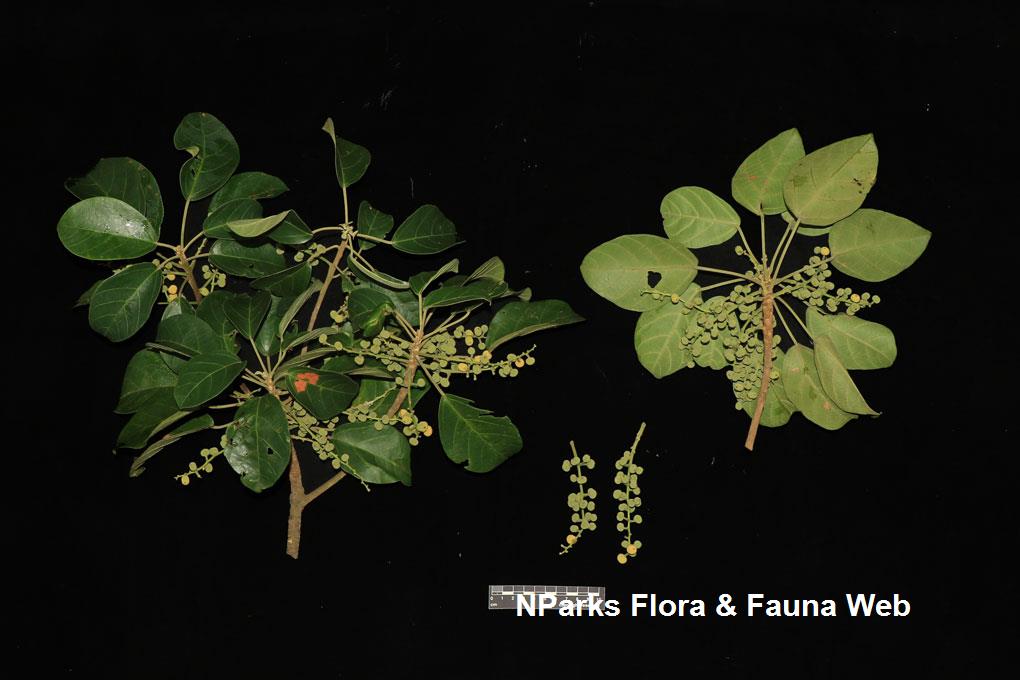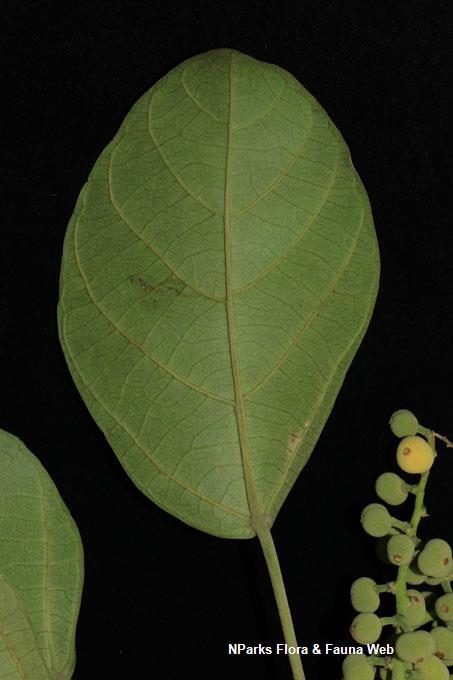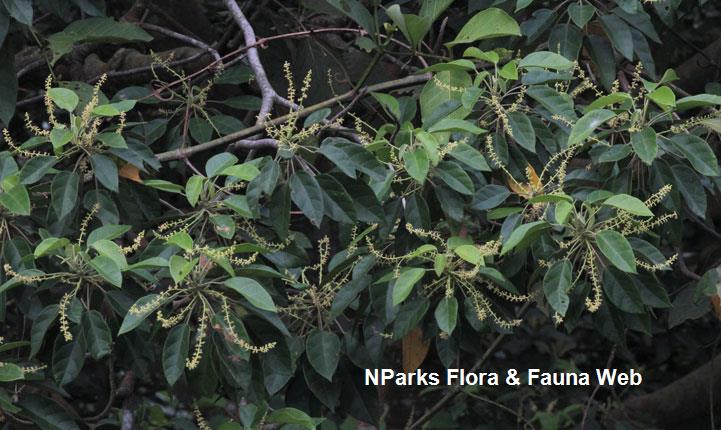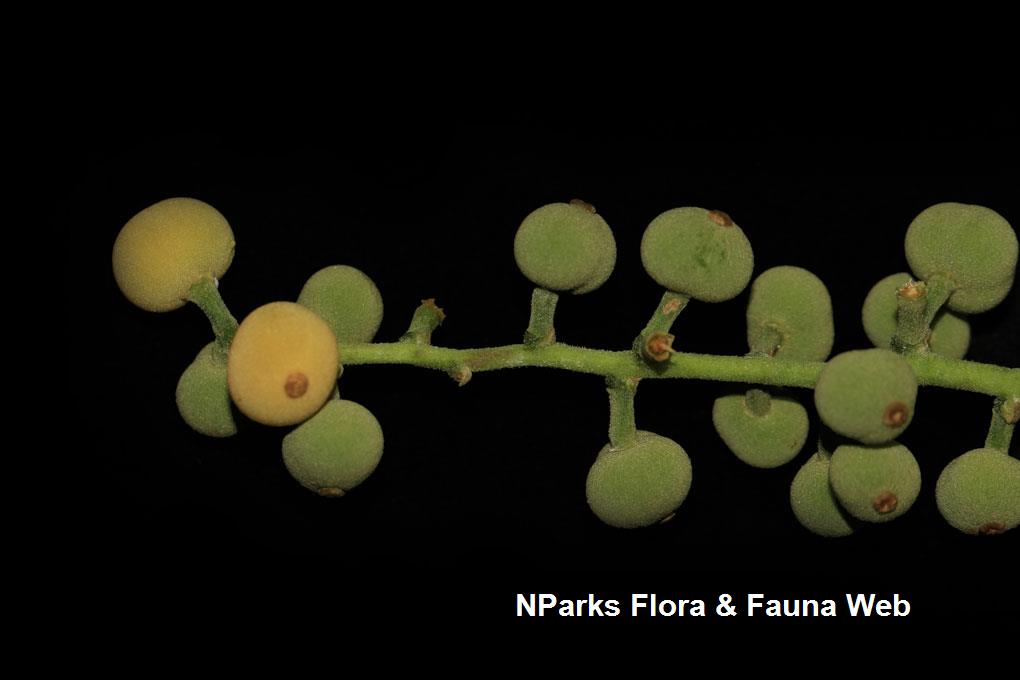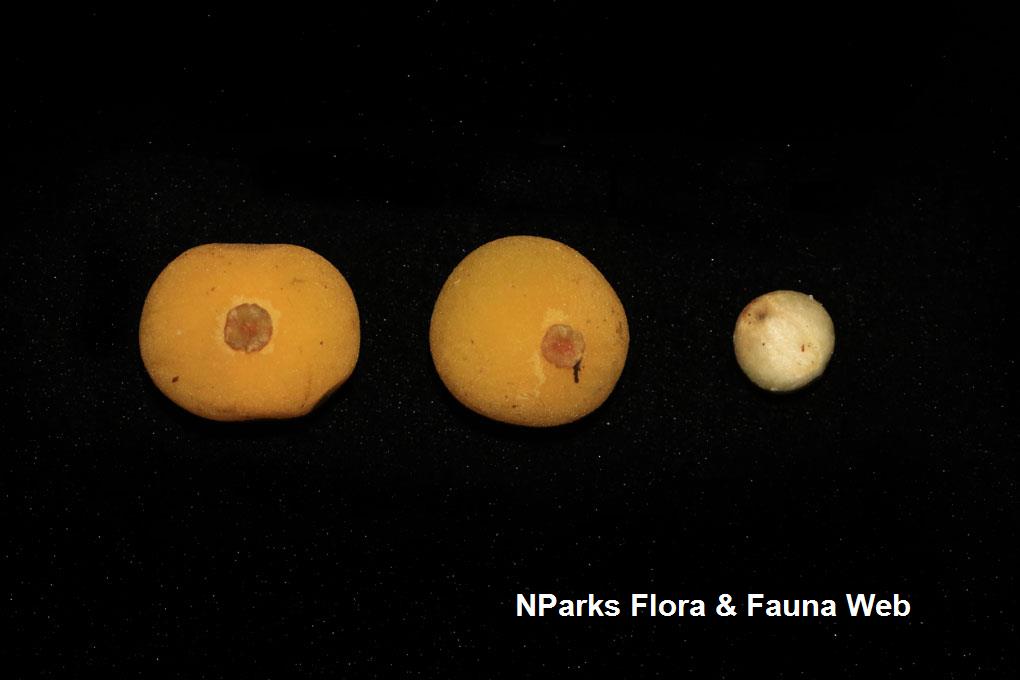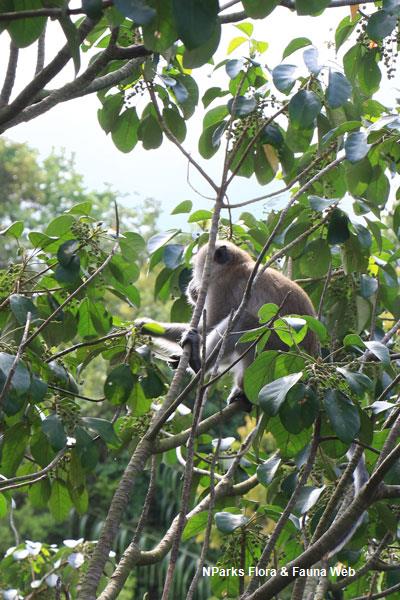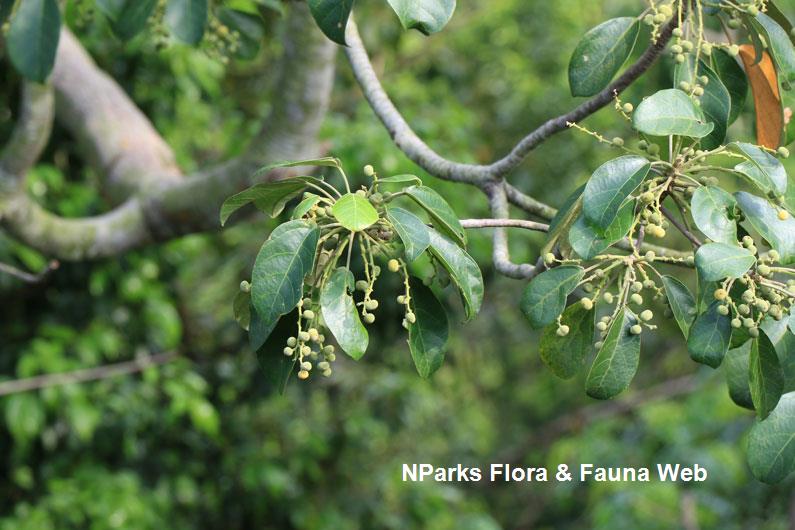
Back
Endospermum diadenum (Miq.) Airy Shaw
| Family Name: | Euphorbiaceae |
| Synonyms: | Endospermum ovalifolium Pax & K.Hoffm., Endospermum chinense auct. non Benth. <3>, Endospermum malaccense Benth. ex Müll.Arg. |
| Common Name: | Membulan, Seduduk-seduduk |
Endospermum diadenum or Membulan is a large tree native to Singapore. Growing to 40 m tall, it has thick buttresses, leaves are spoon, egg or heart-shaped with a hairy underside. Flowers are white, dioecious, tiny, tubular, borne on an inflorescence found along the axils. The male flowers have a soapy fragrance, clustered together while the female flowers are held singly along the inflorescence. The fruit is a round capsule that turns yellow, wrinkly when matured.
Name
Classifications and Characteristics
| Plant Division | Angiosperms (Flowering Seed Plants) (Dicotyledon) |
|---|---|
| Plant Growth Form | Tree (Big (>30m)) |
| Maximum Height | 40 m |
Biogeography
| Native Distribution | Peninsular Thailand, Peninsular Malaysia, Sumatra, Borneo and Singapore |
|---|---|
| Native Habitat | Terrestrial (Primary Rainforest, Secondary Rainforest, Freshwater Swamp Forest) |
| Preferred Climate Zone | Tropical |
| Local Conservation Status | Native to Singapore (Vulnerable (VU)) |
Description and Ethnobotany
| Growth Form | It is a large tree that reaches to 40 m tall with thick buttresses. |
|---|---|
| Foliage | Leaves are spoon to egg or heart-shaped, leathery, measuring 7-25 cm long by 4-22 cm wide with a hairy underside. The younger parts are covered in short fine hairs. A pair of glands is found at the point of insertion of the petiole. The petiole measures to 5 cm long. In young saplings, the leaves are peltate where the petiole is attached to the blade. |
| Flowers | Borne on an inflorescence of up to 17 cm long, found along the axils. Flowers are dioecious where the male and female flowers are produced on the different individuals. The flowers are tiny, tubular, sepals with 3 - 5 irregular lobes. The male flowers are very fragrant, with a soapy smell, clustered together, unstalked, while the female flowers are held singly along the inflorescence, hairy on the outside, held on a 1.5 - 5mm stalk. |
| Fruit | The fruit is a round capsule that do not spilt upon maturity. Measuring 0.85 mm wide, turns from green to yellow, wrinkly when dry. |
| Habitat | Occurs in primary forest, secondary forest on low undulating areas, along streams and occasionally on permanently flooded sites up to 1000 m altitude. <1,2,4> |
| Cultivation | It can be propagated by seed. |
| Ethnobotanical Uses | Timber & Products: The timber is an essential source of sesendok; it is one of the preferred timbers to manufacture clogs shoes. |
Landscaping Features
| Desirable Plant Features | Fragrant (Flowers) |
|---|
Fauna, Pollination and Dispersal
| Seed or Spore Dispersal | Biotic (Fauna) (Vertebrates (Other Mammal)) |
|---|
Plant Care and Propagation
| Light Preference | Full Sun |
|---|---|
| Water Preference | Moderate Water, Lots of Water |
| Plant Growth Rate | Moderate |
| Rootzone Tolerance | Fertile Loamy Soils, Moist Soils, Well-Drained Soils |
| Propagation Method | Seed |
Foliar
| Foliage Retention | Evergreen |
|---|---|
| Mature Foliage Colour(s) | Green |
| Foliar Type | Simple / Unifoliate |
| Foliar Arrangement Along Stem | Spiral |
| Foliar Attachment to Stem | Petiolate |
| Foliar Shape(s) | Non-Palm Foliage (Ovate, Orbicular / Round) |
| Foliar Venation | Reticulate |
| Foliar Margin | Entire |
| Foliar Apex - Tip | Acute, Rounded |
| Foliar Base | Cordate, Rounded / Obtuse, Truncate / Square, Acute |
Non - Foliar and Storage
| Stem Type & Modification | Woody |
|---|
Floral (Angiosperm)
| Flower & Plant Sexuality | Unisexual Flowers , Dioecious |
| Flower Colour(s) | White |
|---|
| Flower Grouping | Cluster / Inflorescence |
| Flower Location | Axillary |
| Flower Symmetry | Radial |
| Flowering Habit | Polycarpic |
Fruit, Seed and Spore
| Mature Fruit Colour(s) | Yellow / Golden |
|---|---|
| Mature Fruit Texture(s) | Wrinkled |
| Fruit Classification | Simple Fruit |
| Fruit Type | |
| Seed Quantity Per Fruit | Few (1-5) |
References
| References | <1> Chayamarit, K & Van Welzen, P.C. (2005). Euphorbiaceae. Flora of Thailand vol. 8(1), pp. 255-256. Bangkok: The Forest Herbarium, National Park Wildlife and Plant Conservation Department. <2> Ridley, H.N. et al. (1924). Endospermum. In: The Flora of Malay Peninsula, vol. 3, pp. 305-306. London: L. Reeve & Co. <3> Ridley, H.N. (1900). The Flora of Singapore. J. Straits Branch Roy. Asiat. Soc. 33: 142. <4> Soerianegara, I. and Lemmens, R.H.M.J. (Editors) (1993). Plant Resources of South-East Asia No 5(1): Timber trees; Major commercial timbers. Bogor, Indonesia: PROSEA Foundation. |
|---|
Image Repository
Others
| Master ID | 29678 |
|---|---|
| Species ID | 3987 |
| Flora Disclaimer | The information in this website has been compiled from reliable sources, such as reference works on medicinal plants. It is not a substitute for medical advice or treatment and NParks does not purport to provide any medical advice. Readers should always consult his/her physician before using or consuming a plant for medicinal purposes. |

